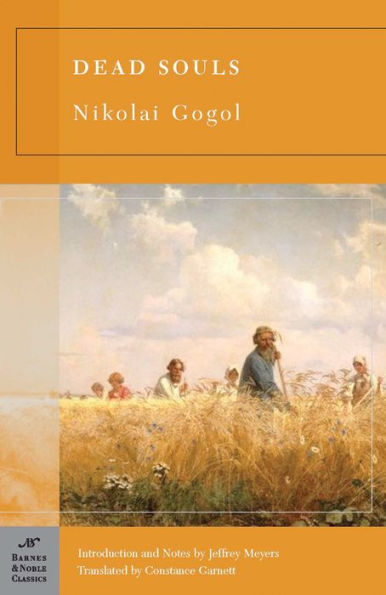Coming up with the title to a work is hard (except for New York Post headline writers), which makes for a convenient loophole in copyright law: Titles can’t be copyrighted. So, yes, there can be a Hemingway book titled For Whom the Bell Tolls (the title itself is an allusion to a John Donne poem), […]
- New introductions commissioned from todays top writers and scholars
- Biographies of the authors
- Chronologies of contemporary historical, biographical, and cultural events
- Footnotes and endnotes
- Selective discussions of imitations, parodies, poems, books, plays, paintings, operas, statuary, and films inspired by the work
- Comments by other famous authors
- Study questions to challenge the readers viewpoints and expectations
- Bibliographies for further reading
- Indices & Glossaries, when appropriate
Russia’s first major novel, and perhaps still its most popular, Nikolai Gogol’s Dead Souls is a comic epic of greed and gluttony that is admired not only for its colorful cast of characters and devastating satire, but also for its sense of moral fervor.
The anti-hero of the novel is a man named Chichikov, who hatches a brilliant plan to get rich quick. He will journey through Russia and buy up, at reduced rates, the recently deceased serfs of landowners, who now won’t have to pay government taxes on the ‘dead souls.’ With this list of fictitious serfs as collateral, Chichikov can buy an estate and begin amassing his fortune. What follows is a series of grotesquely humorous transactions with Russian landowners, each more queer and repellant than the last. Although Gogol spends much of the novel exposing the evils of the Russian gentry through absurd and hilarious satire, he also expresses a passionate love for his country that resonates with readers even today.
A stylistic tour de force, encompassing an astonishing range of voices from delicate, intimate lyricism to robust, bawdy ribaldry, Dead Souls is an intensely felt anatomy of the human condition.
Jeffrey Meyers, a Fellow of the Royal Society of Literature, has published forty-three books, including biographies of Ernest Hemingway, Robert Frost, D. H. Lawrence, Joseph Conrad, and George Orwell. He also wrote the Introductions and Notes to the Barnes & Noble Classics editions of Edith Wharton’s The House of Mirth and Rudyard Kipling’s Kim.
- New introductions commissioned from todays top writers and scholars
- Biographies of the authors
- Chronologies of contemporary historical, biographical, and cultural events
- Footnotes and endnotes
- Selective discussions of imitations, parodies, poems, books, plays, paintings, operas, statuary, and films inspired by the work
- Comments by other famous authors
- Study questions to challenge the readers viewpoints and expectations
- Bibliographies for further reading
- Indices & Glossaries, when appropriate
Russia’s first major novel, and perhaps still its most popular, Nikolai Gogol’s Dead Souls is a comic epic of greed and gluttony that is admired not only for its colorful cast of characters and devastating satire, but also for its sense of moral fervor.
The anti-hero of the novel is a man named Chichikov, who hatches a brilliant plan to get rich quick. He will journey through Russia and buy up, at reduced rates, the recently deceased serfs of landowners, who now won’t have to pay government taxes on the ‘dead souls.’ With this list of fictitious serfs as collateral, Chichikov can buy an estate and begin amassing his fortune. What follows is a series of grotesquely humorous transactions with Russian landowners, each more queer and repellant than the last. Although Gogol spends much of the novel exposing the evils of the Russian gentry through absurd and hilarious satire, he also expresses a passionate love for his country that resonates with readers even today.
A stylistic tour de force, encompassing an astonishing range of voices from delicate, intimate lyricism to robust, bawdy ribaldry, Dead Souls is an intensely felt anatomy of the human condition.
Jeffrey Meyers, a Fellow of the Royal Society of Literature, has published forty-three books, including biographies of Ernest Hemingway, Robert Frost, D. H. Lawrence, Joseph Conrad, and George Orwell. He also wrote the Introductions and Notes to the Barnes & Noble Classics editions of Edith Wharton’s The House of Mirth and Rudyard Kipling’s Kim.

Dead Souls (Barnes & Noble Classics Series)
432
Dead Souls (Barnes & Noble Classics Series)
432

Product Details
| ISBN-13: | 9781593080921 |
|---|---|
| Publisher: | Barnes & Noble |
| Publication date: | 05/26/2005 |
| Series: | Oz Series |
| Pages: | 432 |
| Sales rank: | 47,132 |
| Product dimensions: | 7.94(w) x 5.32(h) x 1.16(d) |
About the Author

